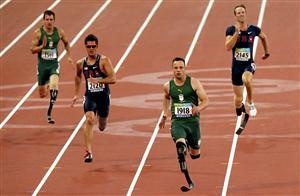 A New Grip On Life
A New Grip On Life
For soldiers who have lost limbs in Iraq, a prosthetic arm inspired by ‘Star Wars’ and other bionic ideas.
by Jesse Ellison
Dean Kamen, inventor of the Segway, is accustomed to being presented with problems people think he should solve. Usually he says no, as he was fully expecting to do when he met with a Department of Defense official in 2005. "This guy visits and basically says, ‘Look, we’ve had 1,600 kids go over [to Iraq] and lose an arm. Two dozen have lost two’," Kamen recalls. " ‘At the end of the Civil War, we gave them a hook on a stick. Now we give them a hook at the end of a plastic tube’." His visitor then checked off a list of demands for an improved prosthetic arm: fully articulate, with an opposable thumb and fine motor control, small, lightweight and completely self-contained "He listed all this stuff, and said, ‘We want it in two years’," Kamen says with a laugh.
But Kamen and his team at DEKA research took it on and have already completed a prototype to show patients at Walter Reed Army Medical Center. If all goes well, working models could be in the hands—could be the hands—of some veterans within the year. "I didn’t expect anything to come out of that meeting," Kamen says. "This turned out to be an extraordinary opportunity to do some extraordinary technology."
Kamen’s device isn’t the only advanced prosthetic intended for Iraq’s wounded warriors. The Pentagon’s Defense Advanced Research Projects Agency (DARPA), has committed $50 million to its Revolutionizing Prosthetics Program. "Because of improvements in medical care and armor, there are many injuries that people can survive now but couldn’t earlier," DARPA’s Jan Walker says. Restoring functional limbs isn’t just a question of compassion. Some amputees want to remain in service, and the military can use them. At present, Walker says, since leg prostheses are more advanced in terms of both design and function, leg amputees can stay on active duty; the goal is to do the same for those who have lost an arm, a more difficult limb to replicate.
With DEKA’s strap-on, surgery-free "Luke Arm" (named for Luke Skywalker’s prosthetic hand in "Star Wars"), those soldiers could be back in action sooner than anyone would have expected. The arm can adapt to various control schemes—from foot pads and pull switches to more-advanced methods—to suit patient preferences. Most important, it has more freedom and flexibility than ever offered before and weighs only as much or less than a human arm. "You went through a movie and a half or a couple of movies before you knew that Luke Skywalker had a prosthetic hand," project manager Stewart Coulter says. "That was the goal. It acts like the real equipment."
But what makes the device truly whiz-bang is its compatibility with a control mechanism developed by Dr. Todd Kuiken of the Rehabilitation Institute of Chicago. Kuiken has pioneered what he calls "targeted reinnervation" and his work could take the next generation of prosthetic arms into genuinely bionic territory. His device attaches to nerves and decodes the signals that tell an arm, wrist, hand and fingers where to go—and for what purpose. When using the Luke Arm with Kuiken’s interface, all one needs to do is think about taking a drink of water and sensors pick up and interpret those tiny electrical impulses, telling the arm to reach out, lift a glass and bring it to the mouth. And the nerves don’t only control the device, they receive input from it as well; instead of relying on sight, amputees can sense that they’re holding a glass and how tightly they are gripping it. One day, Kuiken’s sensors may be able to convey more-subtle information—that the glass is cold, for example. "In five years, I’d like to have a hand that does different grasps, a wrist that goes in two directions, a power elbow, all weighing no more than a human arm," Kuiken says. "If we can do all that, it will be amazing. Emotionally, if you can touch something and feel like it’s your own hand, it would be very powerful."
Prosthetic legs have been getting plenty of attention as well. Vets at Walter Reed are outfitted with Otto Bock Healthcare’s C-Leg, which has a built-in programmable microprocessor that makes gait more natural and aids balance. It can also be set for different tasks, such as walking, running or riding a bike. Future versions will allow for even more variety of movement.
The thrill of the challenge may have motivated Kamen initially, but it’s his visits to Walter Reed that keep him going. "You walk out of there feeling guilty, but it exhilarates you to work harder and faster," he says. "When you look at these kids, it’s like you give them back their life."
ATTENTION READERS
We See The World From All Sides and Want YOU To Be Fully InformedIn fact, intentional disinformation is a disgraceful scourge in media today. So to assuage any possible errant incorrect information posted herein, we strongly encourage you to seek corroboration from other non-VT sources before forming an educated opinion.
About VT - Policies & Disclosures - Comment Policy



